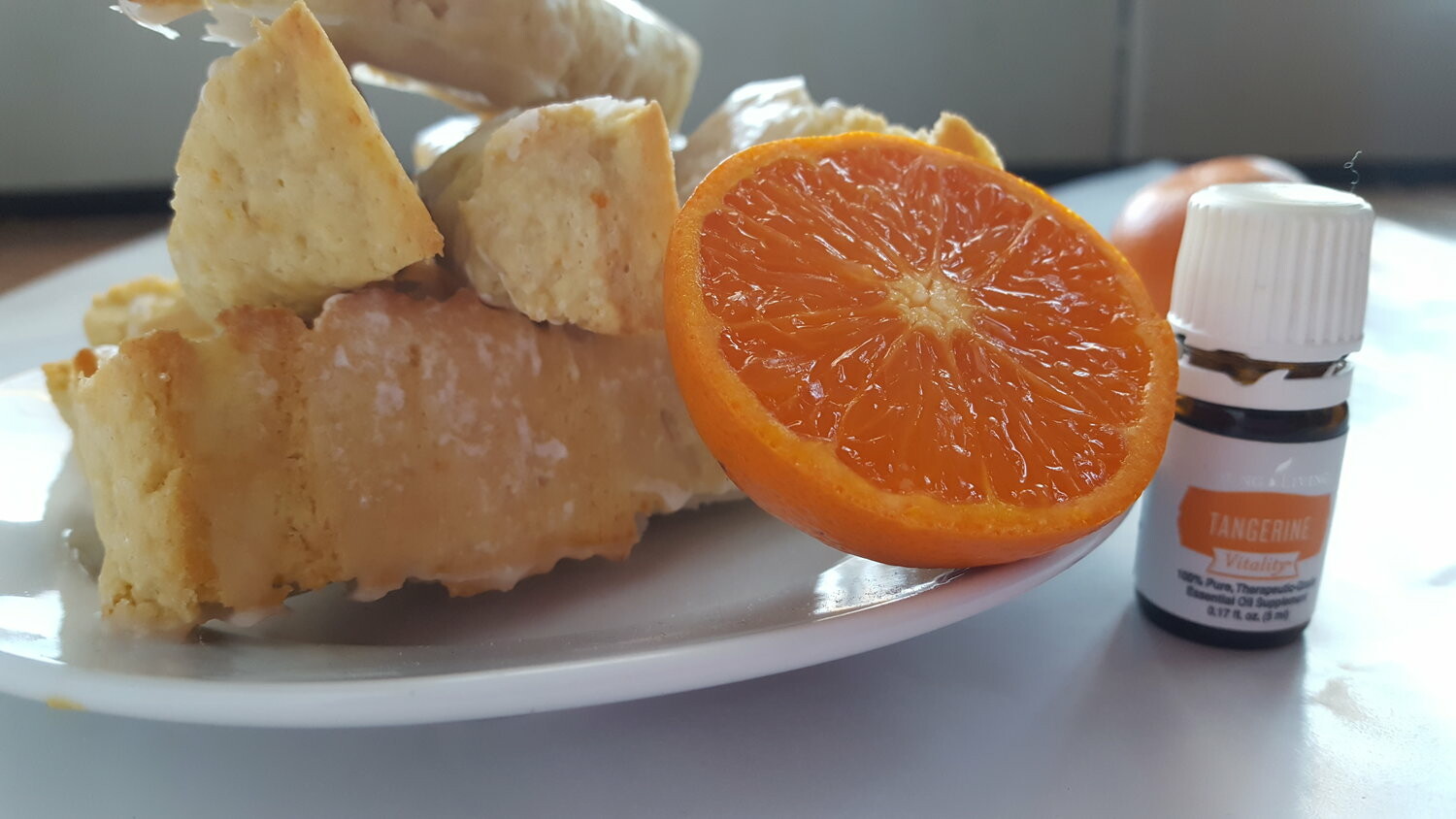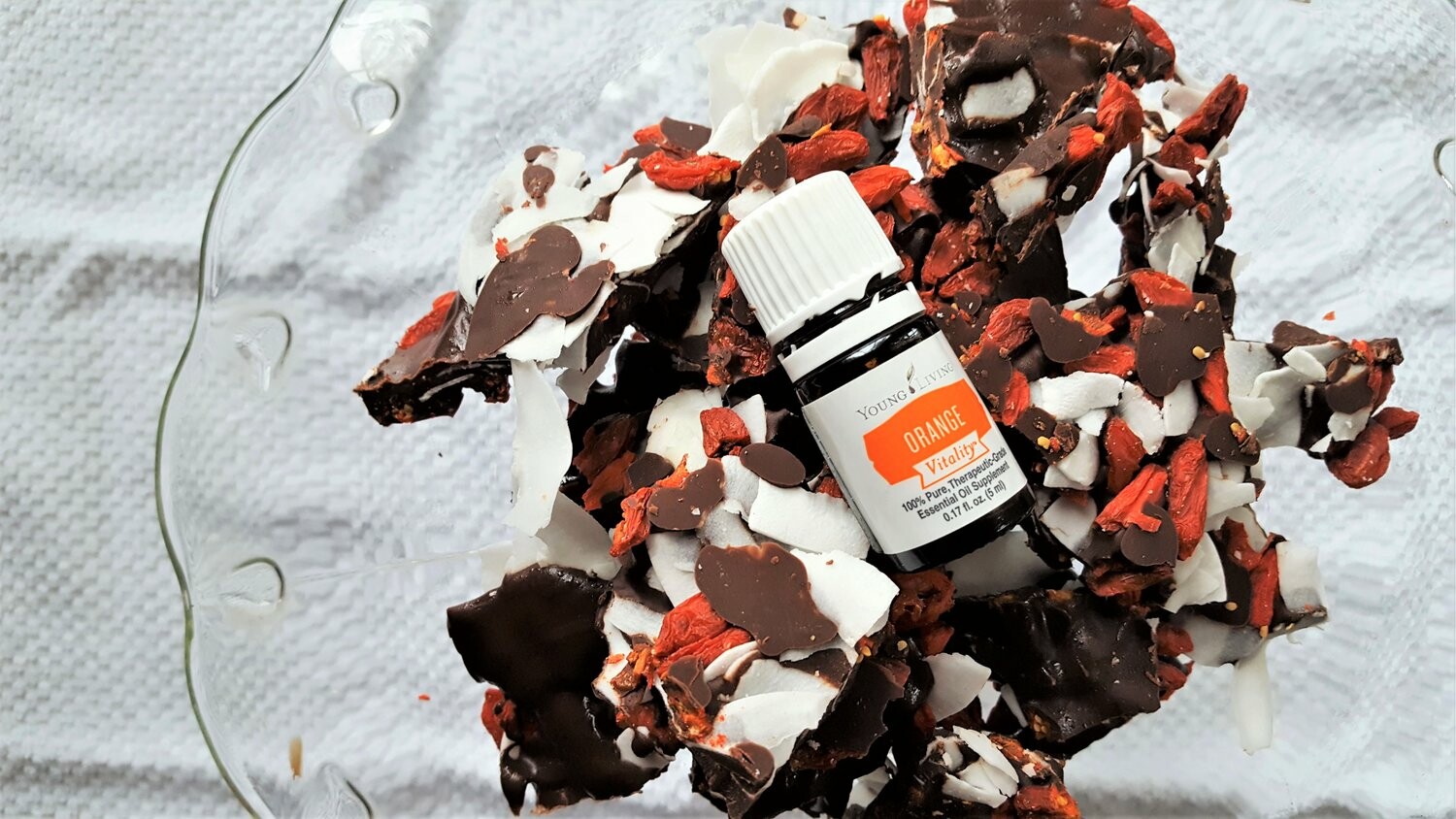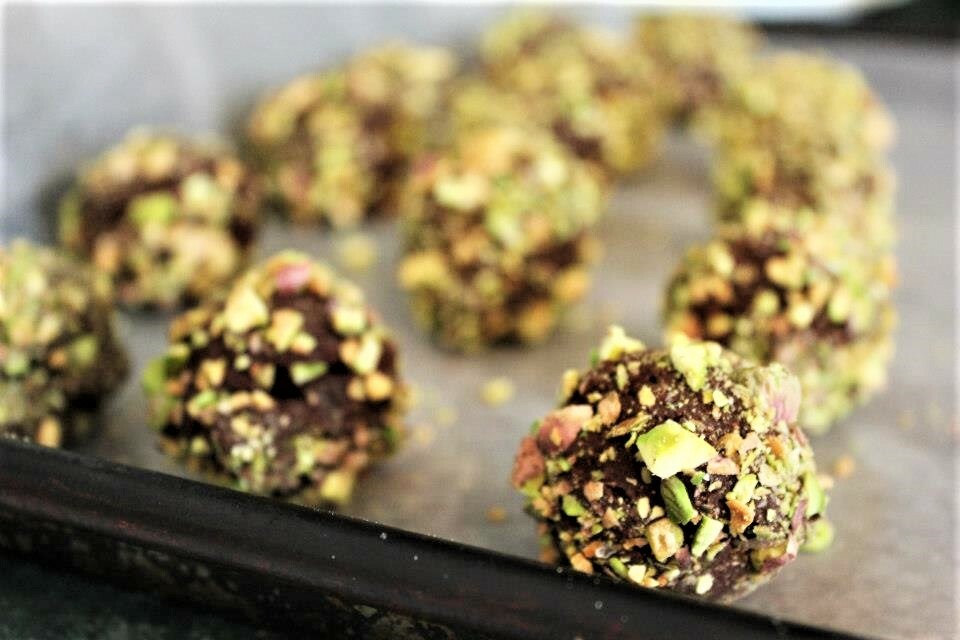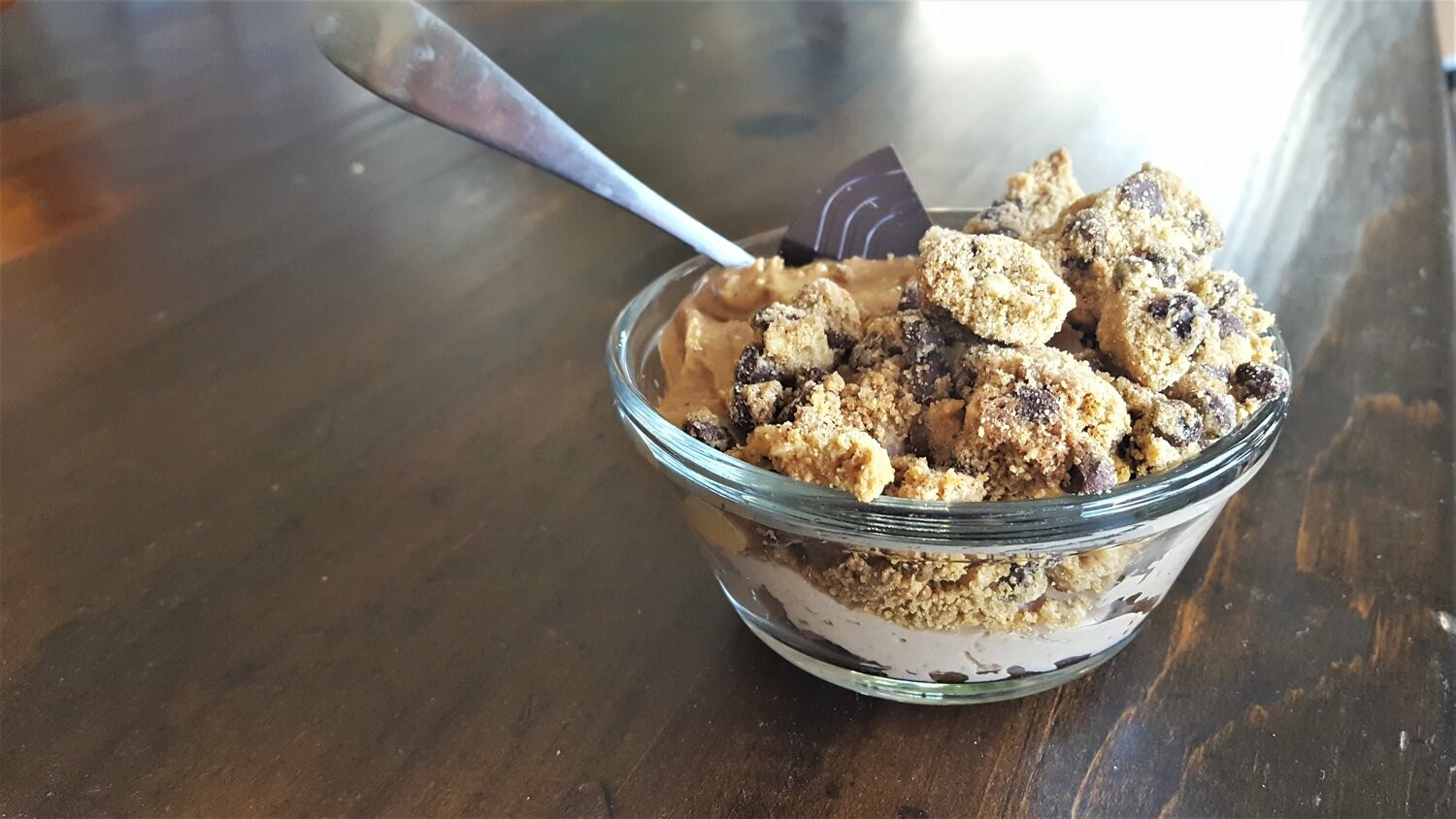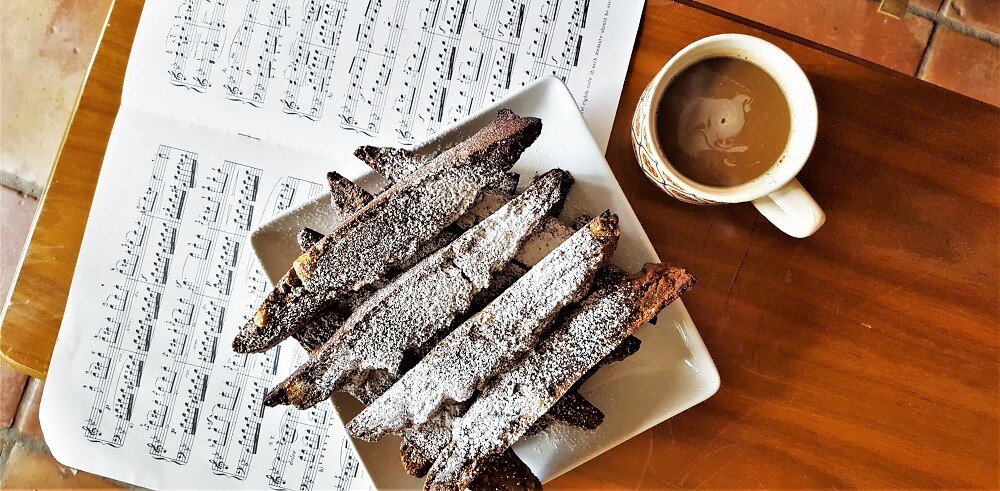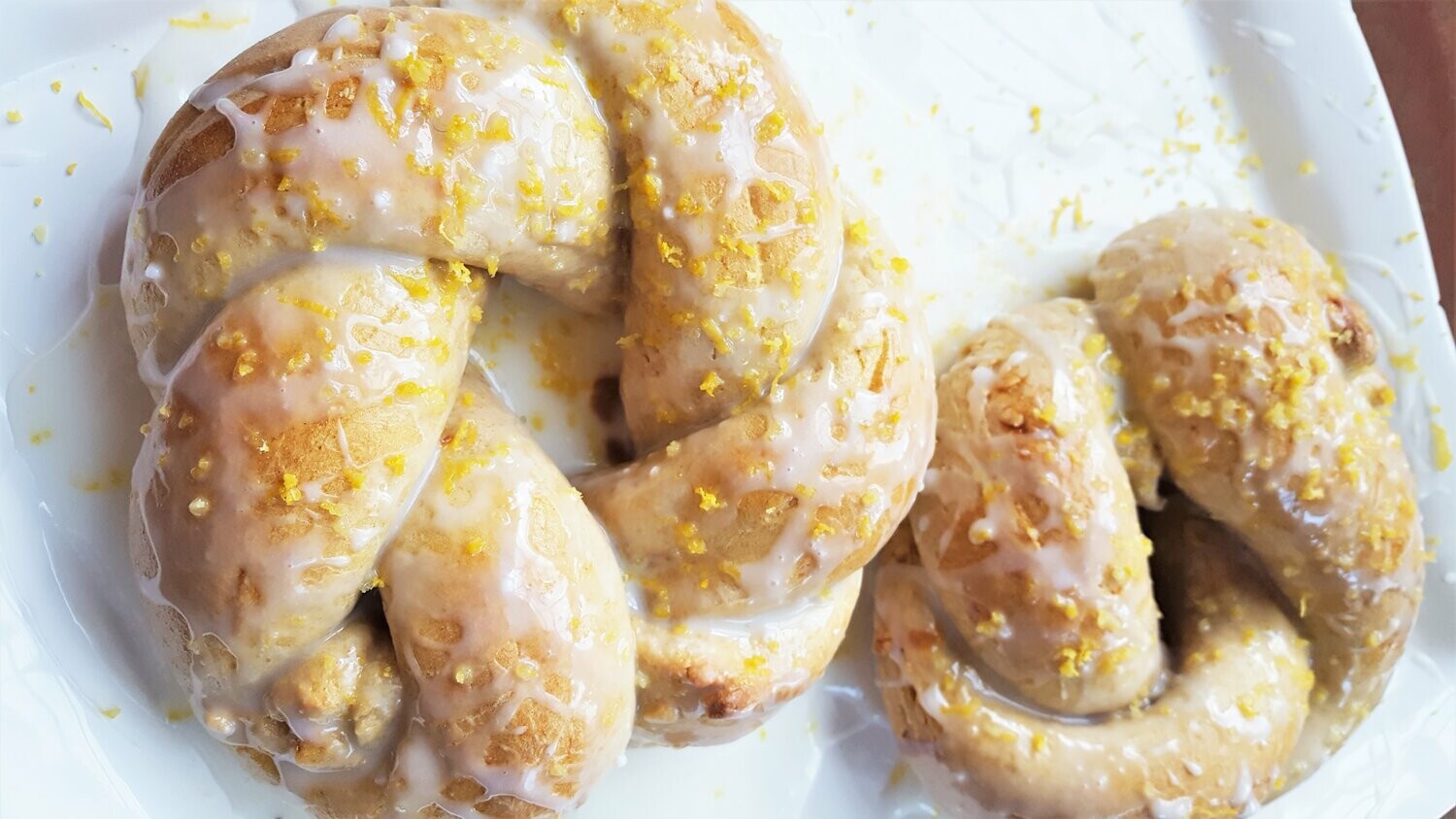
Last week, I was giving myself a hard time.
I had resolved to get up early and be productive in 2020. You know, join the-5am-club, and be a #boss like the rest of Instagram. Every night, I would set my alarm for 5am, fall into super deep sleep, and then turn off my alarm as soon as it went off. I even put the alarm on the other side of the room so I’d have to get out of bed to turn it off….and I still went back to sleep. I’d wake up at 7am feeling groggy and annoyed, something like a bear coming out of hibernation. My overall motivation was low during the day, I was achy, lethargic, and in a bit of a slump.
I blamed myself for being lazy and slumpy…maybe this was a character or personality issue. NOPE! IT’S A SCIENCE ISSUE! And we can fix it. Scientists and doctors call this kind of behavior Seasonal Affective Disorder (SAD), and for people living in my part of the world, it is very common. I live where there isn’t a lot of direct sun during the winter months. I’m not too far from the Canadian border, and also not far from the Great Lakes, so when we hit winter, we are looking at arctic air from the north, and lake-effect snow from the Great Lakes. All of that equates to grey, snowy, slushy, cold, bleak days for about four months solid. Welcome to NY. What does that have to do with snoozing my alarm?
SAD occurs because the serotonin in our brains gets processed too quickly by serotonin transporters. What does that mean? Serotonin is the “the happy chemical.” You produce it when you do things like exercise, or get some sunshine. You were designed to produce serotonin so you would naturally pursue things that are good for you, which is why almost no one produces serotonin when they are doing something painful. The brain is amazing!
Part of the process of serotonin absorption and production is the serotonin transporters. Think of it like this. Your brain is a restaurant, serotonin is a type of food in that restaurant, your receptors are the dining customers, and the transporters are the waiters. Now, imagine that serotonin is placed on your table, and a few bites in, the transporters clear your table. You weren’t finished with that! Well, in their opinion, you were. In short, you may be producing enough serotonin, but you may not be absorbing it.
What does this have to do with winter? Well, serotonin transporters are heavily impacted by fluctuations in light, and light is influenced by the seasons in colder climates. Less light = more active transporters.
“Serotonin metabolism fluctuates with seasonal changes. This is not surprising as serotonin, tryptophan, and melatonin belong to the same chemical class, indoleamine. Across many species, these chemicals respond to light variations intrinsic to seasonality.” Marwa Azab Ph.D.*
People who struggle with SAD during the November-March time frame usually don’t struggle with it during the summer months. And there are far fewer cases of SAD as you go closer to the equator. Is there something wrong with the brains of people who struggle with SAD? No, not at all. They are just more sensitive to the adjustments in their environment, and may also have serotonin transporters that are highly ‘effective’ - as in they move serotonin faster off the tables than they ought to.
So, what can we do? You can always talk to a doctor about what you are experiencing (**I am not a doctor…go find a real one). However, here are some natural things you can do that are effective, cheap, and easy. You may actually scoff at how easy these are.
- Sit near a window for twenty minutes. Maybe move your desk close to a window, or sit in a spot where you know there will be some natural light. The sun didn’t go away just because it’s winter. The rays are still there. The light is still there, and that is what you need. If you can get some light on your skin, and on your face, do that! Just close your eyes and pretend to be a sunflower for a few minutes with your face turned to the sun. This has a direct impact on those overzealous serotonin transporters.
- Trick your brain with light, and reset your internal clock. We’ve already established that your brain is sensitive to light. So let’s use that in our favor. In the morning, let the light hit your face for a few minutes (not the full 20, just a few to get things firing). Periodically do this throughout the day. At night, turn off electronics or use blue light glasses at least an hour before bed. Blue light from electronics messes with your circadian rhythm and makes it much harder for your brain to power down for the night. By manipulating your brain cycles using light, you are more likely to have a regular, restful sleep pattern, with earlier wake-ups and deeper snoozes.
- Drink. Your. Water. So many people are chronically dehydrated, and this does a number on the production of serotonin. I know how hard it is to drink water during the winter because everything is cold and dreary, and you really just want a big, hot coffee. Don’t. Your body needs just as much hydration in the winter as it does in the summer because of the dry, cold air. If you need to warm up your water, go for it! Maybe add a drop of Vitality Oil to it to give it flavor and nutrients.
- Move. Whatever kind of exercise you enjoy, do it for at least 30 minutes a day. When your brain is clearing out serotonin faster than it should, you gotta replenish the tables. Exercise enhances serotonin production, so put together a great playlist, and go move..
- Eat high frequency, high nutrition foods. What is a high-frequency food? It basically means it is not processed, and is closer to its original state, so the cellular integrity and nutritional value is still high and easy to transmit to whomever consumes it….so raw fruits and veggies, whole grains, clean protein sources, and get your high-antioxidant super foods in like Ningxia Red juice. Be sure to watch your processed sugar intake - sugar is usually sought after in the winter months for metabolism and energy reasons, but also to mimic the feelings of serotonin…this method of replenishing the tables, though, isn’t good or long lasting. So put the ice cream away (me too!) and…..
- Cuddle. Make sure this is consensual please, but humans require touch to maintain healthy serotonin levels (along with dopamine and all the other bonding/connection chemicals). It doesn’t have to be creepy. Hug a friend/family member, snuggle with a pet, high-five a colleague, give a friendly (non-creepy) pat on the back to the person at work who just hit a goal, go cuddle your spouse. This is really necessary. Even if you aren’t ‘a touchy person’ your brain is. However, please proceed with caution, respect and common sense for the people around you.
- Aromatherapy. Certain scents can trigger serotonin release in the brain. It’s amazing how the olfactory bulb at the top of your nose is connected to your limbic system, and the power that has on your overall mood. Diffuse citrus and herb oils. My favorites during the winter months are lemon, basil, orange, grapefruit, lime, thyme, cinnamon, peppermint, and wintergreen. Diffusing these oils while at your desk (which you have now moved towards a natural light source) can almost instantly perk you up.
- Plants. Surround yourself with some houseplants. Plants give off fresh oxygen, purify the air, and on a cellular level they vibrate at a higher frequency which is good for your cells. Steer clear of succulents (seriously…there is science behind why), and get a proper houseplant that needs lots of water and sun just like you do.
- Soundtherapy. Did you know that your cells respond to soundwaves? Go to YouTube right now, and search for “432hz”. Just do it. You will get playlists that produce relaxing spa-like music that is measured at 432hz. This measurement of sound frequency can actually impact your cells in a positive way and lift your mood. Don’t be turned off by the hippie-dippie titles of these playlists. You’re here for the soundwaves and the science behind it.
- Prayer. My favorite. Saved the best for last. Spend at least 10 minutes a day sitting with Jesus (maybe while you’ve got your oils diffusing, your soundtherapy going, and your face towards a natural light source) and just sit with Him. Listen for His voice, tell Him about your day, and just chill with Him. This does things for your spirit but also your brain that are just phenomenal.
Ok, peeps! Hang in there. Just a few months left of winter, but we are going to make them healthy, happy ones. Please also see the Disclaimers below.
Where did you get this info?
*https://www.psychologytoday.com/us/blog/neuroscience-in-everyday-life/201911/winter-brain-why-do-we-feel-sad-and-tired-in-winter
**DISCLAIMER: I am not a medical professional. Young Living products are not meant to cure or treat disease or ailments. I will not and can not prescribe or diagnose, and I am not making medical claims of any kind. This recipe is strictly coming from my own experience and research. Please do your own research in conjunction with advice from a trusted physician, and decide what is best for your body.
Please note that I only use and recommend Young Living Essential Oils because they are the purest on the market and the only ones I use. I cannot speak to, or recommend, the benefits of other oils. The essential oils used in this recipe are from Young Living. If you choose to use a different oil, you will have different results and I am not responsible for the outcome.

I want to talk to you about your boobs.
Yep, we’re going there. October is Breast Cancer Awareness month. Breast cancer impacts both men and women alike (more women than men), and while this type of cancer occurs worldwide, the U.S. statistics are particularly sobering:
Breastcancer.org estimates that about 1 in 8 U.S. women (about 12%) will develop invasive breast cancer over the course of her lifetime. In 2019, an estimated 268,600 new cases of invasive breast cancer are expected to be diagnosed in women in the U.S., along with 62,930 new cases of non-invasive (in situ) breast cancer. In 2019, it's estimated that about 30% of newly diagnosed cancers in women will be breast cancers.
As of January 2019, there are more than 3.1 million women with a history of breast cancer in the U.S. This includes women currently being treated and women who have finished treatment.
That sucks. Seriously. That is a staggering number of women battling for their lives.
What can we do about it? Well, before I go any further, please read the disclaimer** at the bottom of this page so we can all remember that I’m not a doctor and am not making medical claims….k thanks. Moving on.
As we know, cancer is either environmental or genetic.It doesn’t just spring itself on you like that creepy dude DM’ing your Instagram. It comes from somewhere. Cancer.gov estimates that “Inherited genetic mutations play a major role in about 5 to 10 percent of all cancers.” Do you know what that means? The odds are in our favor.
Lifestyle matters.
Your stress levels, diet, exercise, and environment matter so much. Your body doesn’t speak synthetic, so when you smother yourself in fake food and fake products, your body doesn’t know what to do, and chemicals change cells. Fact. That is why I help you create recipes and personal products that put healthy and whole things in and on your body. If I am making a moisturizer for your *girls* it’s got good stuff in it…like, the stuff you can pronounce. You have clean options. Here’s one of them.
The recipe below is just meant to support your breast health. It goes on your boobs. It is a natural based body oil and moisturizer that utilizes natural ingredients to support your breast health.
Two items that I want to discuss because I haven’t talked about them before…
- Apricot seed oil is very gentle on sensitive skin and has been used by the Chinese for centuries as a nutritive and medicinal oil (do your research, you will be amazed). It is very light in texture. You do want it to be organic and cold pressed - this is important. In addition to the nutrients that your skin will soak up, apricot seed oil locks moisture into the skin. Double duty!
- Ledum is a North American bushy plant, and the oil is steam distilled from the leaves. The benefits of this oil, and the research being done on it’s overall health benefits, are pretty astounding. However, do not use this oil if you are pregnant. It can be eliminated from the recipe below if you are pregnant.
Dear Lord, so many disclaimers. Ok, let’s get to the good stuff.
Ta-Ta Tonic
- 8oz glass bottle with dropper
- 7oz cold pressed, organic apricot seed oil
- 20 drops of Ledum essential oil
- 30 drops of Frankincense essential oil
- 30 drops of Myrrh essential oil
- 20 drops Lemon essential oil
- 20 drops Lavender essential oil
Mix the essential oils together in the bottle first. Then top off with the apricot seed oil, leaving a bit of space at the top. Screw the top on, and gently tip back and forth to combine the oils.
To use: After showering and drying off, drop a full dropperful on both breasts (one dropper is enough for both) and rub in. Do this daily. This mixture contains a citrus oil, so do not apply to your skin and go sit in direct sunlight or a UV-ray tanning bed. You will be photosensitive.
**DISCLAIMER: I am not a medical professional. Young Living products are not meant to cure or treat disease or ailments. I will not and can not prescribe or diagnose, and I am not making medical claims of any kind. This recipe is strictly coming from my own experience and research. Please do your own research in conjunction with advice from a trusted physician, and decide what is best for your body.
Please note that I only use and recommend Young Living Essential Oils because they are the purest on the market and the only ones I use. I cannot speak to, or recommend, the benefits of other oils. The essential oils used in this recipe are from Young Living. If you choose to use a different oil, you will have different results and I am not responsible for the outcome.
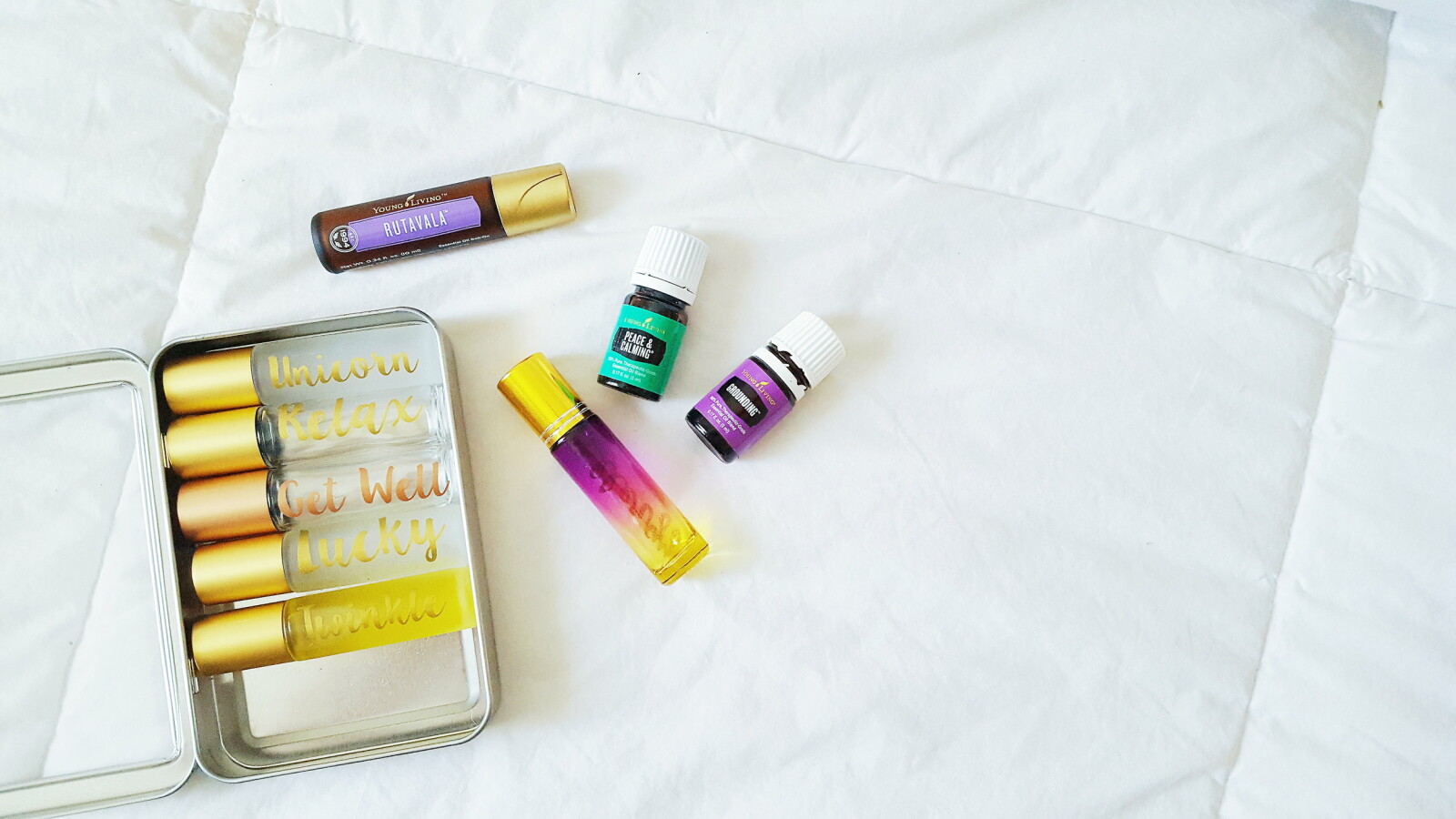
SCHOOL IS STARTING IN JUST A FEW WEEKS, WHICH IS CRAZY TO ME.
And this time of year, I get this one question a lot - what oils will support my child when they can’t focus in class?
I also hear this question from grown-ups who struggle to focus in lectures, or in those 1-hour business meetings that should have been an email…you know the ones. Lots of things can clutter our focus. Sometimes it is anxiety, a racing mind, poor diet and sleep patterns, an excess of caffeine/sugar in our diet, or too much activity in our lives. Sometimes it is related to a learning disability or a developmental disorder. Whatever is keeping a person from focusing, it can be very discouraging, especially if it is chronic. We want to support a clear, uncluttered and calm mind and that’s what we’re going to attempt to do right now.
I say this all the time, but here it is again - I am not a doctor or medical professional. I can’t diagnose, cure or treat anyone, and I cannot prescribe anything. I can tell you that there is a lot of research available on essential oils and supporting a person’s focus. If your child has a specific diagnosis, always check with your doctor before implementing a new regimen of anything. Your doctor is the expert; I am not. I also recommend that the person struggling to focus (for whatever reason) stop eating corn syrups, highly processed foods, and caffeine/sugars/artificial sweeteners. I am not trying to be your nutritionist by any stretch, but we all would function better if we cleaned the crap out of our diet. Your brain is an organ and it is connected to your gut. Straight facts.
Ok, I’m off my soapbox. Let’s build our rollers! Rollers are a quick and effective way to get oils on your skin and in your body. I am only talking about Young Living Essential Oils. I know zilch, squat, nada about other companies and cannot recommend that you use their oils, so if you ask me ‘What about so-and-so’s blend…?”
Baby, I ain’t got no clue. I know what I use.
If you are sending these rollers to school with your child, please let your child’s teacher know that these will be coming to school with them, and how often they will be using them. I often suggest the organic sunflower oil (available on Amazon) as a carrier oil because it is nut free.
Focus Rollers
Gather your carrier oil and roller bottles first.
Recommended carrier oils (all available on Amazon, and organic is your best bet):almond, fractionated coconut, sunflower (for the nut allergy folks), olive, avocado.
Roller bottles with stainless steel roller balls
Now decide what you are trying to address/support, and add 3-5 drops of each oil in the blend you are creating.
Pour the essential oils in BEFORE topping off with the carrier oil because you want to be sure you have all of the oils in the bottle.
- Struggling to focus due to fearful, racing thoughts: Bergamot, Geranium and Clary Sage
- Wake up and focus: Basil, Lemon, Peppermint and Rosemary
- To calm a SUPER active person: Lavender, Peace & Calming, Citrus Fresh, Valor
- To support rest: Cedarwood, Lavender, RutaVaLa
- For studying: Diffuse Peppermint while the student is studying, and send them to school with Peppermint in their roller on test day.
- Rollers you can purchase pre-mixed: Peace & Calming, Tranquil, RutaVaLa
To use, have the person roll the oil behind their ears and along the back of their neck. You cannot over-do it, but you don’t have to slather your neck. Just a quick roll of oil 2-3 times a day is perfect.
If rollers are not allowed in your place of work or your child’s classroom, you can diffuse at night while the person is sleeping. The goal is to get the oils into the body regularly, so diffusing at night is great. You can also apply the oils to the bottoms of your feet while you sleep.
Have a wonderful school year everyone!
Don’t have oils, but now you need some? Click here to get started.
Don’t have oils, but now you need some? Click here to get started.

ANYONE WHO KNOWS ME, KNOWS I LOVE BUNNY RABBITS.
When we were kids, we raised bunnies and I trained them to the point where they would cuddle up next to me and snooze. How freaking cute is that? I LOVE bunnies.
I do not appreciate bunnies in my garden. Every friendship needs boundaries, and that boundary goes right around my garden. The family of rabbits residing in my backyard this year are struggling with those boundaries, and that is depressing because vegetables (even ones you plant yourself) can be expensive! Half the time, they just take a couple bites of something and leave it half-eaten on the ground. It’s like having toddlers with tails.
So, I whipped up this spray that is meant to be a deterrent. It is supposed to taste so terrible to the rabbits that they don’t munch my plants. It is never meant to hurt them. All of these ingredients are plant based (except for the vodka). The spray is safe enough for me to put on and around my body, and on my food. The rabbits and small critters are definitely not going to want to eat large quantities of this mix, so spray away! I did an experiment and sprayed all of the veggies in my garden except for a couple of tomatoes. The tomatoes have been nibbled. The other veggies haven’t. Boom, bunnies!
Garden Saving Spray
- 1 tbs. cayenne pepper.
- 2 cap-fulls of Thieves Household Cleaner (plant based and no chemicals - just tastes terrible)
- 2 oz. vodka
- 5 drops Purification Essential Oil
- Distilled water
- 16oz. glass spray bottle
Mix the pepper, cleaner, vodka, Purification, and water into the glass spray bottle. Spray onto your veggies and you are good to go. You may have to reapply once a week depending on how much rain you are getting.

THE AVERAGE COST FOR A QUALITY FACE SERUM IS AT LEAST $50.
That is just….high. That’s high, right? Especially considering that you are probably using it every day, and half of the ingredients are impossible to pronounce. Like, you flip the bottle and there is a long scientific word that ends in ‘acid’ and when you ask the girl behind the counter what that means, you get a vague answer like ‘Oh it is an extract of Himalayan sea kelp.’
……the Himalayas ain’t got no sea kelp, honey…they be mountains. But I digress.
What if you could make a face serum of the highest quality using therapeutic grade essential oils that have been used for centuries? With ingredients you can pronounce? With oils you already have?
I say this all the time, but I want to be sure you’ve got this. The ONLY essential oils I am talking about are Young Living Essential Oils. These oils are the purest of the pure, and contain no extenders, alcohols, or petrochemicals. Please, please, please do not try this with oils you bought on Amazon. I have no idea what is in that oil, and even if it says 100% pure on the bottle, under U.S. law, it only needs to contain 5% oil. Repeat - this serum recipe (and this blogger) use Young Living Essential Oils only.
Ok, let’s get bee-yoo-tee-full.
Luminous Face Serum
- 1oz. glass bottle with dropper (should use amber or blue tinted glass to protect the oils from UV rays)
- Organic sweet almond oil, or grapeseed oil
- 30 drops Lavender Oil
- 20 drops Frankincense Oil
- 20 drops Myrrh Oil
- 10 drops Manuka Oil
- 10 drops Roman Chamomile Oil
- 7-10 drops of Vitamin E
Combine all oils and the Vitamin E in the glass bottle. I would start by putting your essential oils and Vitamin E in first, and then topping with the sweet almond oil. Screw the top on tightly and gently tip the bottle from side to side to incorporate all of the oils. Do not shake, but tip gently.
Application: After cleansing and exfoliating your skin, fill the dropper and apply the serum to your forehead and on each cheek. Massage over face and neck. If your skin is usually dry, you can apply a moisturizer over the serum after a minute or two.
Skin Types: I have combination skin that is VERY sensitive. My pores do not clog, even in my T-zone with this serum. I have noticed that it supports the overall quality of my skin, and I have zero redness or reaction to these oils. The fat molecules in sweet almond oil are smaller than those in coconut oil, so they are less likely to get stuck in pores and cause breakouts. For people with dry skin, this serum is brilliant. If you have very, very oil skin, maybe limit your use to 3x a week.

